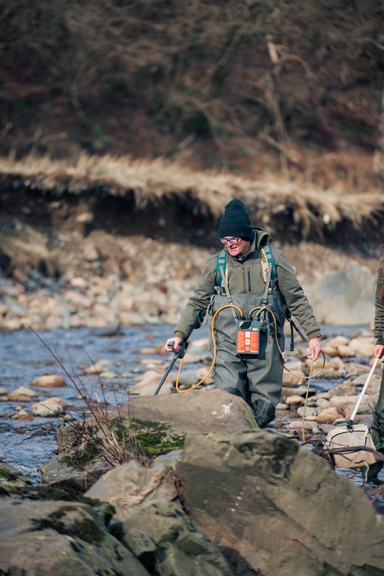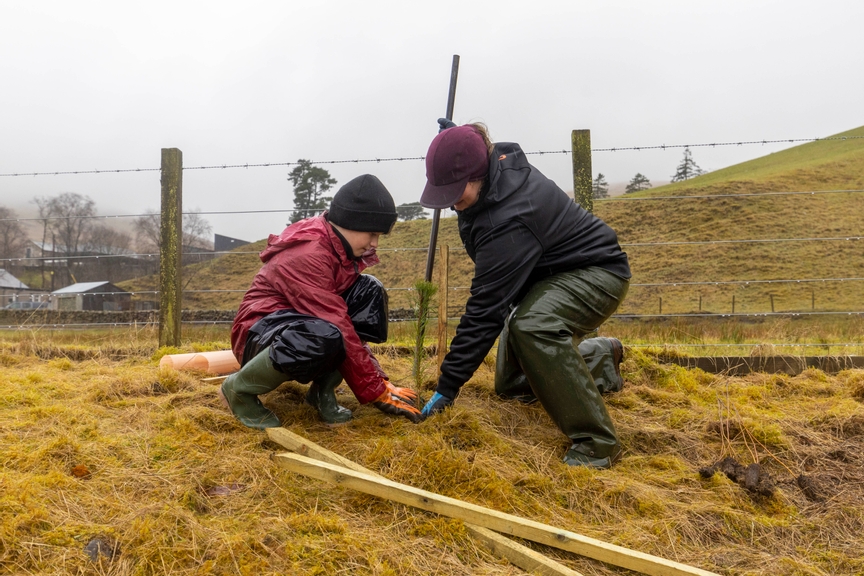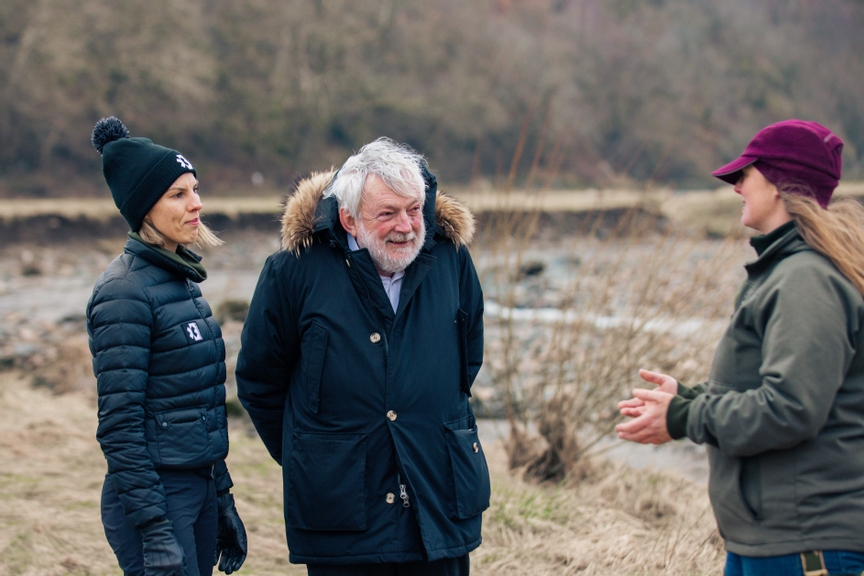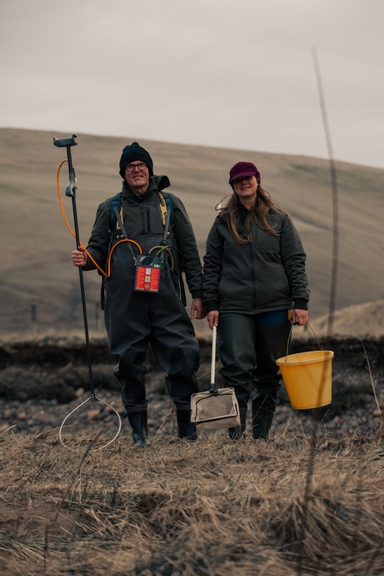Extreme E has revealed its plans to support the restoration of the River Nith to ensure the preservation of Atlantic salmon as part of its legacy programme ahead of its highly anticipated Scottish event in May
The sport for purpose championship makes its second appearance in the UK following its Season 1 finale, the Jurassic X Prix, in Dorset. This time Extreme E will take to the former Glenmuckloch opencast coal mine site in Dumfries and Galloway for the Hydro X Prix.

Extreme E’s environmental focus in Scotland will highlight the issues Atlantic Salmon face as a result of rising water temperatures and changing rainfall patterns.
Julia Wall-Clarke, Head of Impact and Communications at Extreme E, said: “This is our first time coming to Scotland, which is super exciting as its on our back doorstep. This allows us to talk about how issues relating to climate change are not just global – they are right here.
“For the Hydro X Prix we are talking about how water plays a huge role in future renewables and heathy conservation. It was pertinent to us to find projects that impactfully tie in. The work here at the River Nith and the initiative to transform the former opencast coal mine where we are racing into a Hydro plant were both a natural fit.”
The all-electric off-road racing series will embark on a Legacy Programme to implement a multi-stage project, focused on mitigating climate change effects on local salmon stocks. Partnering with the Nith District Salmon Fishery Board, the aim is to reverse the impact of climate change through community engagement, education, and the application of science.

The Restoring of the River Nith project is an ambitious, large scale catchment-wide project that will re-meander rivers, introduce large woody structures to create diversity on the riverbed and spawning substrate for salmon, stabilise riverbanks with green-engineering, plant 200 hectares of riparian woodlands, and install 100 leaky dams to help slow the river flow and reduce erosion.
Jim Henderson, Fishery Director at Nith Catchment Fishery Trust, said: “Its great to work with Extreme E on delivery this legacy programme. The series has that perfect combination of motor racing, which grabs everyone’s attention, but then it focuses on the environmental efforts of the estate here and long term plans. It will bring motorsport to attention here in a green sustainable way and leave a green legacy for the future.
“The Hydro X Prix will have a global audience and highlight the issue of Atlantic salmon in crisis – at the River Nith we are doing something about it, and building on that has got to be a goal that’s worth achieving.”
On 11 May, just ahead of Extreme E second double-header of Season 3, Extreme E personnel, including drivers, will kick off the Legacy Programme by assisting with tree planting and fence building to protect the banks of the River Nith and preserve the Atlantic Salmon that play a crucial role in Scotland’s biodiversity and heritage.

Water temperatures over 23 degrees Celsius begin to cause issues for salmon biology, with eggs unable to survive the heat the subpopulations within rivers will almost certainly go extinct.
Changes in rainfall is also significantly altering water levels. Lower water levels in the summer make it difficult for the salmon to swim backup stream, while higher levels in the winter encourage river bank erosion. The material that is eroded flows downstream and smothers Salmon eggs, increasing egg mortality.
From the impactful native tree planting of over a thousand trees, to using innovative technologies being implemented by Official Technology Partner Vodafone Business to monitor water quality and temperatures, Extreme E will focus on a long-term transformation of the River Nith area that will protect the Atlantic salmon stocks.
Vodafone Business collaborates with Extreme E to use the pioneering championship as a testbed for innovation and in Scotland it will be through the use of a water sensor, which will monitor temperatures, acidity levels and pollutions levels in the water which will benefit the wider legacy programme.
Amanda Jobbins, CMO and Director of Go-to-Market and Partnerships at Vodafone Business, said: “After the success of our installation of early detection forest fire sensors in Sardinia last year, we were keen to see how innovative technology can be applied to the Scottish legacy programme. The River Nith catchment area is one of the most populated and industrialised in the region. We are excited to deliver real-time water quality monitoring using our IOT sensors to support the important conservation work here.”

For centuries, the River Nith has been home to one of Scotland’s most iconic species, the Atlantic salmon. However, the number of adult salmon returning to Scottish rivers has declined steeply in recent decades.
Atlantic Salmon play a vital role in the functioning of aquatic ecosystems and represent an are indicator species. The health of salmon populations closely reflects the status of their larger marine ecosystem.
Each individual salmon returns to spawn in the river where it hatched, so rivers, such as the Nith, around the north Atlantic are home to distinct subpopulations of this salmon. If the Atlantic Salmon cannot return to their spawning ground, due to tempertaute changes or the effects of erosion, this disrupts the life cycle.
Tree planting along the riverbanks will help stabilise the ground, as the roots hold onto the soil, to minimise erosion and cast shade over the rivers cooling the water temperature. Fencing the area is vital in keeping sheep out of the area to allow these trees to grow, protected from heavy grazers required in upland areas.
The importance of renewable energy will form a key part of the educational side of this Legacy Programme. Coal has been mined for decades within the Nith catchment and it is only in the last two years that the final opencast coal mine closed.
These mines have had an impact on water quality within the Nith catchment but they are now being replaced by green energy sources such as wind power and hydro.

This transition is represented within the race-site of Extreme E’s Hydro X Prix, with the Glenmuckloch Hydro Project marking a fantastic example of the move away from carbon intensive practices towards renewable energy.
The project, located at the disused opencast coal mine near Kirkconnal, Scotland, will see the construction of a co-located 1,600 MWh capacity plant and a 33.6 MC wind farm. Once constructed, the plant will have a 1,600 MWh storage capacity which can be delivered at a rate of 210 MW per hour providing 8 hours of storage capacity. Utilising two 105 MW reversible hydro-turbines, the site will store power during periods of excess energy supply and release stored energy at times of peak demand.
The racing action and updates on the Legacy Programme, will be best viewed live on STV and ITV, in the UK, over both Saturday 13 and Sunday 14 May to enable the best views. Outside of the UK, please visit here for broadcaster details.





